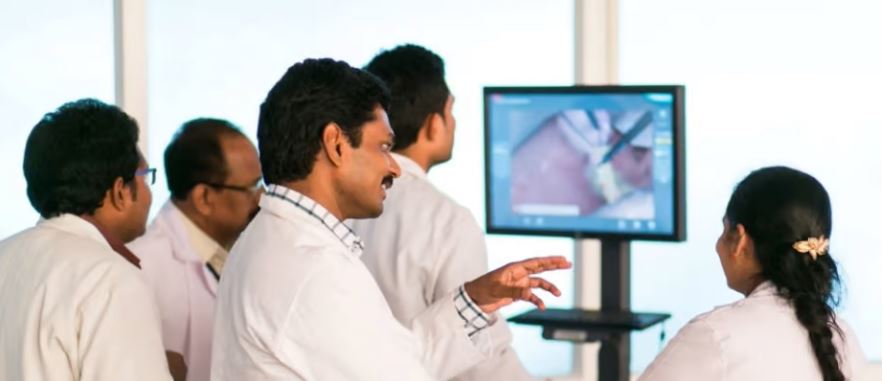Technology Category
- Analytics & Modeling - Machine Learning
- Analytics & Modeling - Robotic Process Automation (RPA)
Applicable Industries
- Education
- Finance & Insurance
Applicable Functions
- Maintenance
Use Cases
- Leasing Finance Automation
- Virtual Training
Services
- System Integration
- Training
About The Customer
The customer is one of the largest automobile manufacturers in the world. They were looking to automate their finance and accounting processes, specifically the processing of invoices. The customer was dealing with a high volume of invoices, with 150,000 invoices per month from 5,000 suppliers. The customer was struggling with the complexity of handling a multi-country roll out, with varying invoice formats and business rules specific to different supplier types. The customer had attempted to implement Robotic Process Automation (RPA), but the results were not as expected due to the rule-based nature of most RPA solutions and the frequent changes in invoice templates.
The Challenge
The client, one of the world's largest automobile manufacturers, was struggling with the automation of their finance and accounting processes due to the complexity of handling a multi-country roll out. The client was dealing with huge monthly volumes of invoices, varying formats, and business rules specific to different supplier types. The process was heavily dependent on manual execution, making it time-consuming and prone to errors. With increasing volumes, the finance and accounting team was unable to meet the processing timelines. The client had attempted to implement Robotic Process Automation (RPA), but the results were not as expected. The rule-based nature of most RPA solutions made them unsuitable for handling frequent changes in invoice templates. The addition of new vendors, changes in invoice formats, and changes in supplier status made the initial RPA approach unsuccessful. The client was looking for an automation solution that could process at least 70% of the invoices, but the continuous introduction of new formats made this a challenging task.
The Solution
JIFFY.ai's AI-based Invoice Processing HyperApp was leveraged to address the client's challenges. The solution involved the use of JIFFY.ai's AI-based document extraction engine to automatically understand suppliers and their invoice formats without manually training each format. The solution also included a human in the loop interface to correct errors while processing invoices and automatically improve the overall straight through processing using Machine Learning (ML) models. The solution allowed for easy configuration of validation rules for specific suppliers and geographies. It also provided deep insights into suppliers, payments, and cash flows, thereby improving business efficiency and experience. The JIFFY.ai team studied the client's top suppliers, who contributed to the majority of invoices being processed. A combination of rule-based automation and ML models were applied to process all the invoice types using JIFFY.ai. The JIFFY.ai bot was fed with 12 months of historical invoices and read the invoices that were registered by the operational resources into the ERP system. The bot would automatically map the invoice PDFs to the data in the ERP system, auto-creating the training data for creating the ML model.
Operational Impact
Quantitative Benefit

Case Study missing?
Start adding your own!
Register with your work email and create a new case study profile for your business.
Related Case Studies.

Case Study
Real-time In-vehicle Monitoring
The telematic solution provides this vital premium-adjusting information. The solution also helps detect and deter vehicle or trailer theft – as soon as a theft occurs, monitoring personnel can alert the appropriate authorities, providing an exact location.“With more and more insurance companies and major fleet operators interested in monitoring driver behaviour on the grounds of road safety, efficient logistics and costs, the market for this type of device and associated e-business services is growing rapidly within Italy and the rest of Europe,” says Franco.“The insurance companies are especially interested in the pay-per-use and pay-as-you-drive applications while other organisations employ the technology for road user charging.”“One million vehicles in Italy currently carry such devices and forecasts indicate that the European market will increase tenfold by 2014.However, for our technology to work effectively, we needed a highly reliable wireless data network to carry the information between the vehicles and monitoring stations.”

Case Study
Safety First with Folksam
The competitiveness of the car insurance market is driving UBI growth as a means for insurance companies to differentiate their customer propositions as well as improving operational efficiency. An insurance model - usage-based insurance ("UBI") - offers possibilities for insurers to do more efficient market segmentation and accurate risk assessment and pricing. Insurers require an IoT solution for the purpose of data collection and performance analysis

Case Study
Smooth Transition to Energy Savings
The building was equipped with four end-of-life Trane water cooled chillers, located in the basement. Johnson Controls installed four York water cooled centrifugal chillers with unit mounted variable speed drives and a total installed cooling capacity of 6,8 MW. Each chiller has a capacity of 1,6 MW (variable to 1.9MW depending upon condenser water temperatures). Johnson Controls needed to design the equipment in such way that it would fit the dimensional constraints of the existing plant area and plant access route but also the specific performance requirements of the client. Morgan Stanley required the chiller plant to match the building load profile, turn down to match the low load requirement when needed and provide an improvement in the Energy Efficiency Ratio across the entire operating range. Other requirements were a reduction in the chiller noise level to improve the working environment in the plant room and a wide operating envelope coupled with intelligent controls to allow possible variation in both flow rate and temperature. The latter was needed to leverage increased capacity from a reduced number of machines during the different installation phases and allow future enhancement to a variable primary flow system.

Case Study
Automated Pallet Labeling Solution for SPR Packaging
SPR Packaging, an American supplier of packaging solutions, was in search of an automated pallet labeling solution that could meet their immediate and future needs. They aimed to equip their lines with automatic printer applicators, but also required a solution that could interface with their accounting software. The challenge was to find a system that could read a 2D code on pallets at the stretch wrapper, track the pallet, and flag any pallets with unread barcodes for inspection. The pallets could be single or double stacked, and the system needed to be able to differentiate between the two. SPR Packaging sought a system integrator with extensive experience in advanced printing and tracking solutions to provide a complete traceability system.

Case Study
Transforming insurance pricing while improving driver safety
The Internet of Things (IoT) is revolutionizing the car insurance industry on a scale not seen since the introduction of the car itself. For decades, premiums have been calculated using proxy-based risk assessment models and historical data. Today, a growing number of innovative companies such as Quebec-based Industrielle Alliance are moving to usage-based insurance (UBI) models, driven by the advancement of telematics technologies and smart tracking devices.

Case Study
Revolutionizing Medical Training in India: GSL Smart Lab and the LAP Mentor
The GSL SMART Lab, a collective effort of the GSL College of Medicine and the GSL College of Nursing and Health Science, was facing a challenge in providing superior training to healthcare professionals. As clinical medicine was becoming more focused on patient safety and quality of care, the need for medical simulation to bridge the educational gap between the classroom and the clinical environment was becoming increasingly apparent. Dr. Sandeep Ganni, the director of the GSL SMART Lab, envisioned a world-class surgical and medical training center where physicians and healthcare professionals could learn skills through simulation training. He was looking for different simulators for different specialties to provide both basic and advanced simulation training. For laparoscopic surgery, he was interested in a high fidelity simulator that could provide basic surgical and suturing skills training for international accreditation as well as specific hands-on training in complex laparoscopic procedures for practicing physicians in India.







